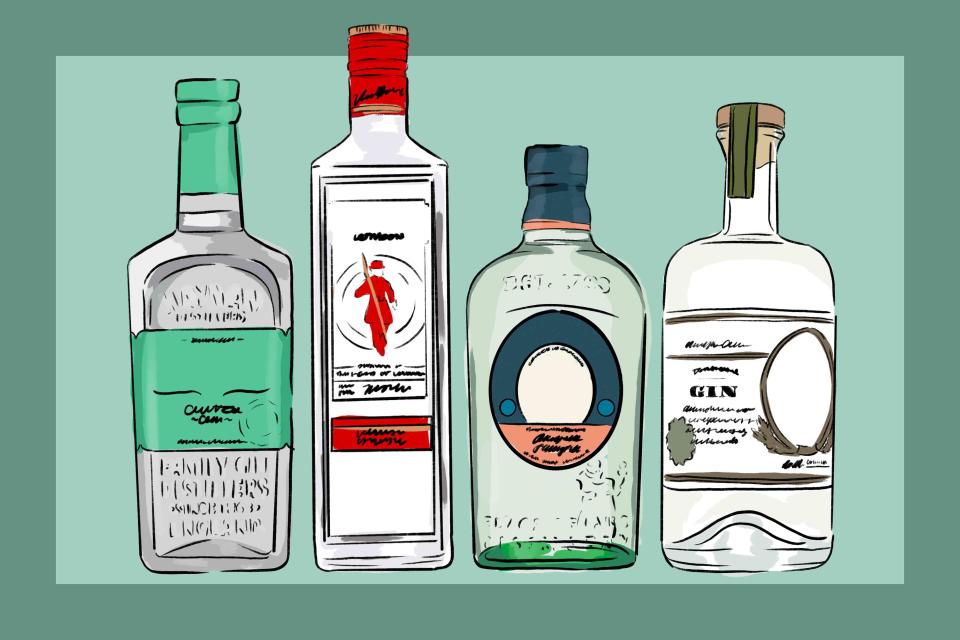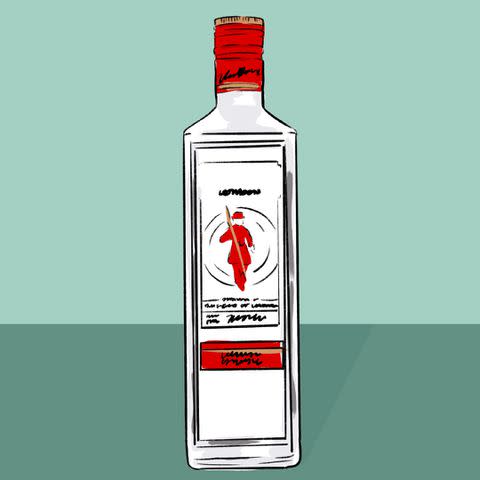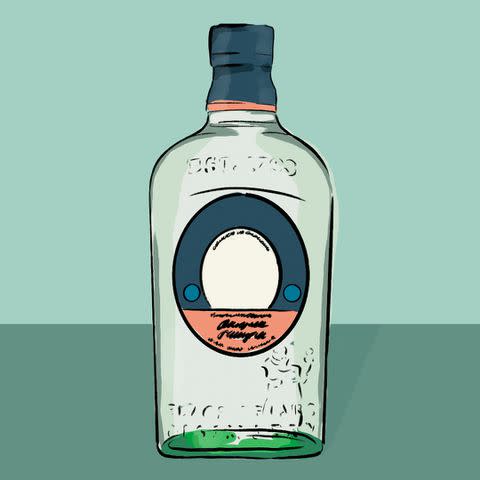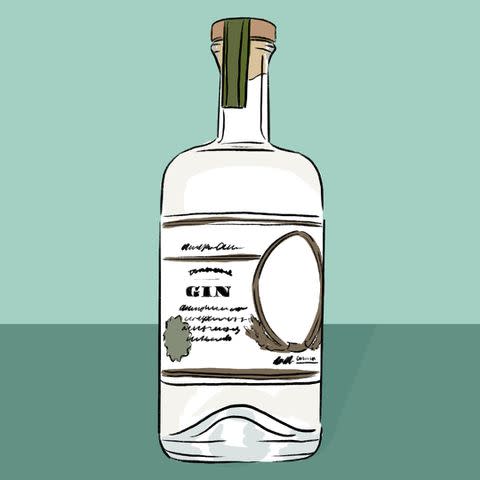Understanding the 4 Main Types of Gin, According to Experts
Understand the different styles of gin beyond London Dry.

Sarah Maiden / Food & Wine
Among the most widely consumed distilled spirits, gin is unique. Where other liquors are defined by their base ingredient, distillation style, and geographical origin, gin is set apart by the distinctive botanicals used to flavor the spirit.
“When you hear ‘gin,’ juniper is the first thing that should come to mind,” says Summer Goff, lead bartender at Death & Co. Denver. “Legally, juniper must be in the botanical blend for anything labeled gin.” The other botanicals used are completely up to the producer and can vary based on where the spirit is made.
Related: How Is Gin Made?
“The broader spectrum of gin has very few rules,” says Natasha Bahrami, owner of The Gin Room in St. Louis. “It can be distilled from anything that can be fermented, [it] must use juniper but predominance is not strictly measured, and [it can be] distilled in so many ways from pot still to vapor distilled to distilling each botanical separately.”
The category is incredibly diverse due to the relative freedom given to producers, but also because of the spirit’s long and storied history. “Think of gin as the ultimate spectrum of flavors,” says Bahrami. “Every gin is not for everybody, but there definitely is a gin for every palate.”
There are many sub-categories of gin. This can also include genever or jenever, sometimes called Holland gin, the predecessor of modern gin though one that has its own unique distinctions. In modern bartending, however, there are typically four main styles of gin to note. These are the differences between each and how best to use them in your drinks, according to experts.
London Dry Gin

Sarah Maiden / Food & Wine
The London Dry style is what most casual drinkers think of as gin. It’s the most widely consumed style of the spirit, typified in classic brands like Beefeater, Tanqueray, and newer labels like Ford’s Gin.
London Dry gin is the only subcategory of gin that has any sort of legal definition, though interestingly, it isn’t required to be made in London.
Related: What Is London Dry Gin?
To be considered a London Dry gin, the botanicals used must all be natural, and they must be included during the distillation process rather than macerated or infused after distillation is complete. “[Londong Dry gin] is recognizable for its very juniper and citrus-forward aroma and flavor profile,” says Goff. “The color will be clear, sometimes with a silvery tint from the botanical oils. It should be bright, clean, and crisp, warming but not sharp.”
When it comes to classic gin cocktails, bartenders usually reach for London Dry gin first. Its crisp juniper-forward flavor and aroma can maintain its character when mixed with syrups, citrus juice, and liqueurs, such as in a Gimlet or a Last Word. “For the person who prefers their Martini dry, this is the gin category for you,” says Goff.
Old Tom Gin

Sarah Maiden / Food & Wine
Although there’s no legal definition for Old Tom gin, this style dates back to the 1800s and is often described as a bridge between London Dry gin, and genever.
“Old Tom Gin has the same classic gin botanicals of juniper, citrus, coriander, and orris root, but has some added sugar post-production and may see some barrel aging,” says Goff. Because there are no legal standards dictating production, each distillery can approach the style however they choose.
The addition of sugar or barrel aging has a pronounced effect on the flavor and viscosity, though the classic botanical notes associated with London Dry gin are still present. “It has a softer, more viscous mouth feel and its softer demeanor lends itself to cocktails like the Bee’s Knees, Martinez cocktail, or a barrel-aged Old Tom Bobby Burns with the Barr Hill Tom Cat,” says Bahrami.
Plymouth Gin

Sarah Maiden / Food & Wine
Plymouth gin is a unique subcategory of gin that’s represented by only one brand, also named Plymouth. Made in the town of Plymouth on the southern coast of Devon, England, the style of gin once had a specific geographic certification, but the brand allowed it to lapse in 2014 to avoid having to disclose its production process.
Plymouth is made similarly to the London Dry style, meaning most of the familiar botanicals are used to flavor it. “Where it begins to differ is the balance of those botanicals,” says Goff. “Where other London Dry brands allow juniper to take center stage, Plymouth allows the other botanicals to step up, resulting in more present earthy and citrus notes.”
The aroma of Plymouth gin is more focused on citrus and a bit of earthiness that’s supported by juniper. It has a softer flavor profile than London Dry gin which makes it a versatile base for cocktails. “Plymouth lends itself well to almost any cocktail application, from Gimlets to Martinis,” says Goff. “My favorite Martini is 50/50 Plymouth and blanc vermouth, with a twist.”
Bahrami also enjoys Plymouth gin in a Martini. “Plymouth gin has somehow always been my favorite gin for a Dirty Martini, the cocktail that got me into gin,” she says.
New Western/Contemporary Gin

Sarah Maiden / Food & Wine
Contemporary, New Western, or New American gin are catch-all terms that describe more modern gins that don’t fit into any of the historic subcategories. Although the use of juniper is required, producers who make gin in the New Western can use a variety of techniques and often experiment with things like vapor distillation or going beyond the classic botanicals used to flavor more traditional gins.
“I think the most exciting examples of this category are producers using botanicals that represent where it's being made,” says Goff. “St. George Terroir and Leopold No. 25 are great examples. They’re using botanicals that grow specific to the region, or even on the distillery estate.” The use of freshly foraged rose, native sage, cucumber, lavender, jasmine, and chamomile have all been explored by various producers.
Because of the diversity in flavor across this sub-category, this style can work with a wide range of drinks.
“In cocktails, you can start to flex your creativity and choose the cocktail based on the gin,” says Goff. “[A gin] that has delicate florals like jasmine and chamomile, try it in a Clover Club. [For] one that has a bunch of alpine herbs, try in a White Negroni.”
Bahrami agrees. “Contemporary gins can be a lot of fun as they are quite expressive in their botanical builds and lend themselves especially well to a range of tonics,” she adds.
For more Food & Wine news, make sure to sign up for our newsletter!
Read the original article on Food & Wine.

